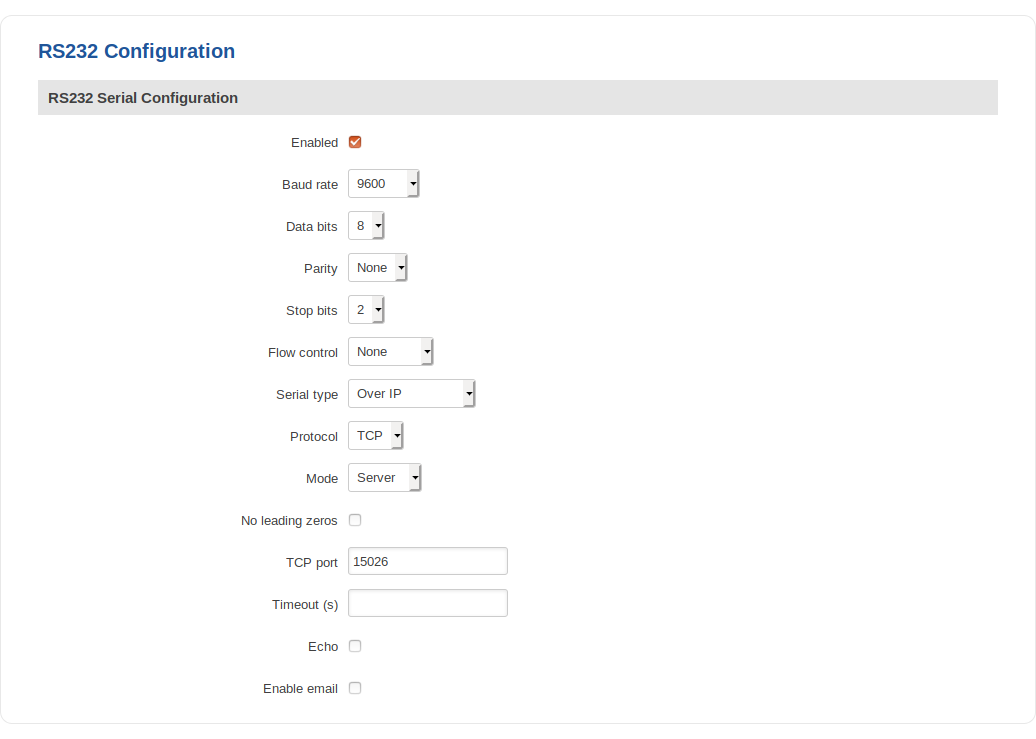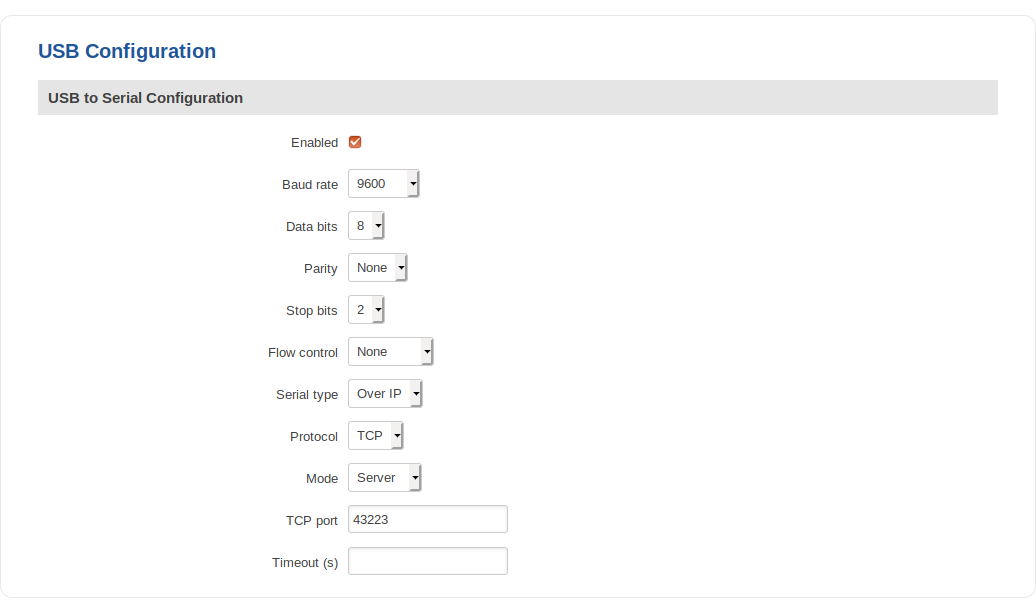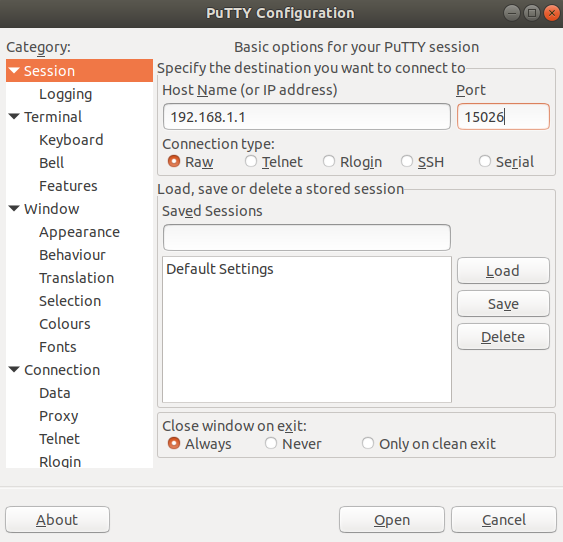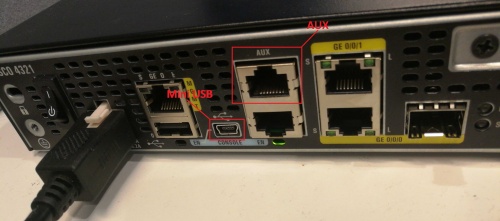Reaching Cisco router console port remotely: Difference between revisions
Appearance
No edit summary Tags: Mobile edit Mobile web edit |
|||
| (One intermediate revision by one other user not shown) | |||
| Line 1: | Line 1: | ||
__TOC__ | __TOC__ | ||
==Introduction== | ==Introduction== | ||
| Line 24: | Line 25: | ||
===USB=== | ===USB=== | ||
---- | ---- | ||
Using | Using Mini USB – USB type A configuration. Configured from the WebUI, Services → <b>[[RUT955 USB Tools|USB Tools]]</b> → USB to Serial page: | ||
[[File:Cisco usb config.png]] | [[File:Cisco usb config.png]] | ||
Latest revision as of 13:50, 20 January 2021
Introduction
This article describes how to connect to a console of another device (e.g., a Cisco router, Fortigate firewall, etc.)
Prerequisites
You will need:
- A RUT955 router
- An RS232 (male) - RJ45 cable (to connect to a Cisco AUX port):
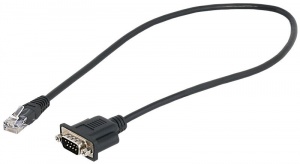
- Or a USB type Mini - USB type A cable (to connect to a USB type mini console port):
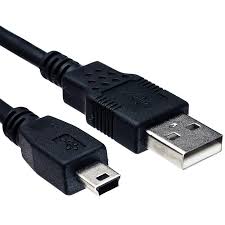
Configuration
There are multiple ways to connect to a console port, which are described in the sections below:
RS232 - RJ45
RS232 can be configured from the Services → RS232/RS485 → RS232 Configuration page. The following RS232 configuration should be used:
USB
Using Mini USB – USB type A configuration. Configured from the WebUI, Services → USB Tools → USB to Serial page:
PuTTY configuration
The console can be accessed by using software such as PuTTY (can be downloaded from here.
The PuTTY configuration should look like this:
Console port
Example of console ports:

